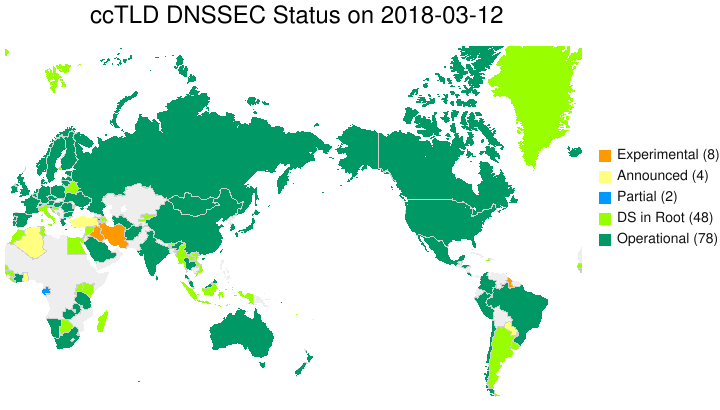Did you know the Internet Society Deploy360 Programme provides a weekly view into global DNSSEC deployment? Each Monday, we generate new maps and send them to a public DNSSEC-Maps mailing list. We also update the DNSSEC Deployment Maps page periodically, usually in advance of ICANN meetings.
DNS Security Extensions — commonly known as DNSSEC — allow us to have more confidence in our online activities at work, home, and school. DNSSEC acts like tamper-proof packaging for domain name data, helping to ensure that you are communicating with the correct website or service. However, DNSSEC must be deployed at each step in the lookup from the root zone to the final domain name. Signing the root zone, generic Top Level Domains (gTLDs) and country code Top Level Domains (ccTLDs) is vital to this overall process. These maps help show what progress the Internet technical community is making toward the overall goal of full DNSSEC deployment.
These maps are a bit different from other DNSSEC statistics sites in that they contain both factual, observed information and also information based on news reports, presentations, and other collected data. For more information about how we track the deployment status of TLDs, please read our page on the 5 Stages of DNSSEC Deployment.
The maps and associated data files track both the DNSSEC status of country-code TLDs (ccTLDs), shown in the maps, and also generic TLDs (gTLDs), shown in the comma-separated value (CSV) files.
If you want to learn more about DNSSEC, you can start with these links:

